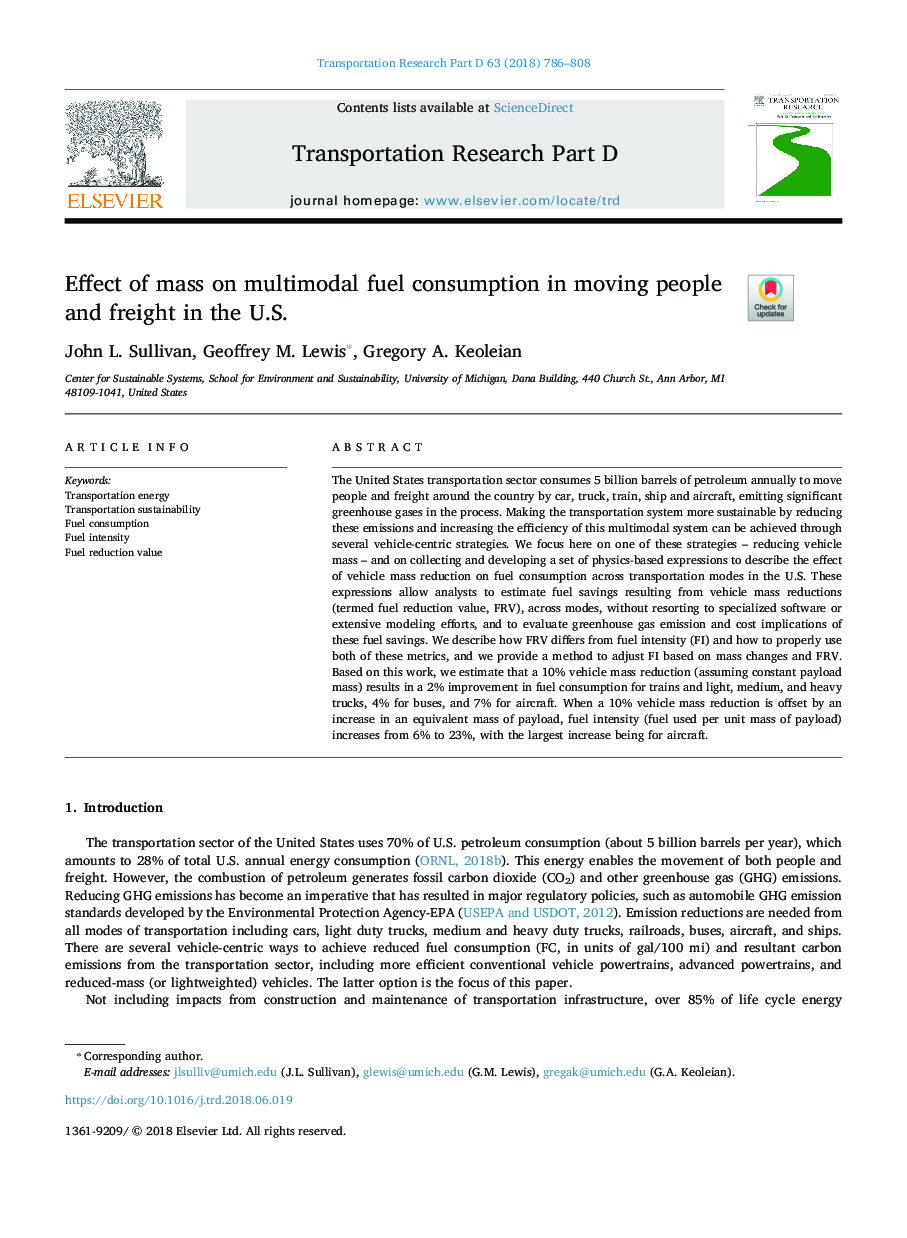| Article ID | Journal | Published Year | Pages | File Type |
|---|---|---|---|---|
| 7498623 | Transportation Research Part D: Transport and Environment | 2018 | 23 Pages |
Abstract
The United States transportation sector consumes 5 billion barrels of petroleum annually to move people and freight around the country by car, truck, train, ship and aircraft, emitting significant greenhouse gases in the process. Making the transportation system more sustainable by reducing these emissions and increasing the efficiency of this multimodal system can be achieved through several vehicle-centric strategies. We focus here on one of these strategies - reducing vehicle mass - and on collecting and developing a set of physics-based expressions to describe the effect of vehicle mass reduction on fuel consumption across transportation modes in the U.S. These expressions allow analysts to estimate fuel savings resulting from vehicle mass reductions (termed fuel reduction value, FRV), across modes, without resorting to specialized software or extensive modeling efforts, and to evaluate greenhouse gas emission and cost implications of these fuel savings. We describe how FRV differs from fuel intensity (FI) and how to properly use both of these metrics, and we provide a method to adjust FI based on mass changes and FRV. Based on this work, we estimate that a 10% vehicle mass reduction (assuming constant payload mass) results in a 2% improvement in fuel consumption for trains and light, medium, and heavy trucks, 4% for buses, and 7% for aircraft. When a 10% vehicle mass reduction is offset by an increase in an equivalent mass of payload, fuel intensity (fuel used per unit mass of payload) increases from 6% to 23%, with the largest increase being for aircraft.
Related Topics
Life Sciences
Environmental Science
Environmental Science (General)
Authors
John L. Sullivan, Geoffrey M. Lewis, Gregory A. Keoleian,
